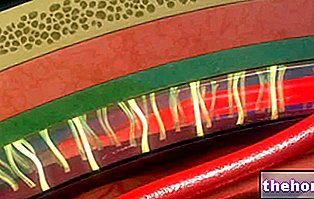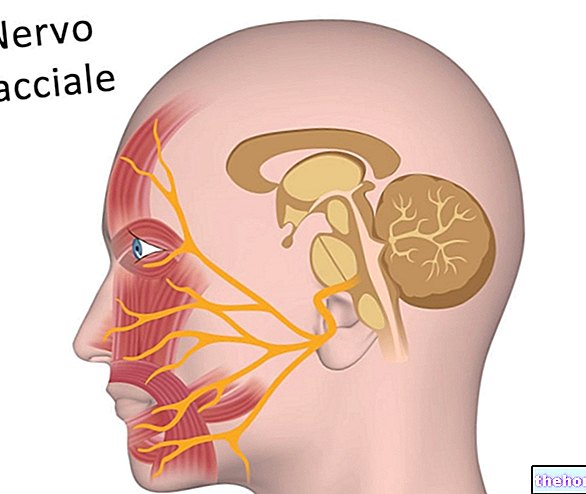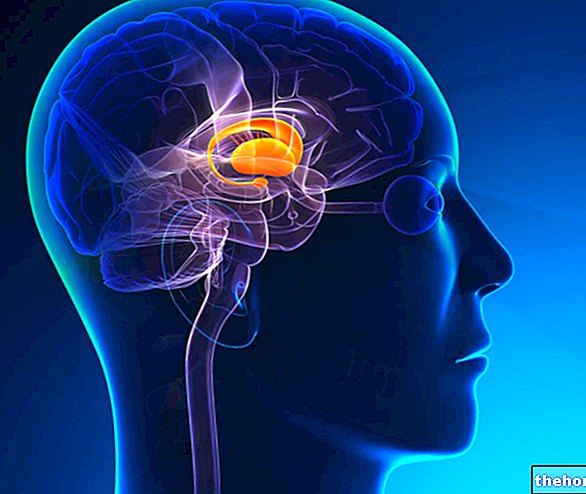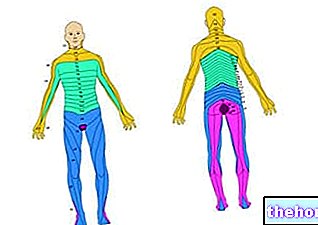The kidneys play very important functions: in addition to the well-known filtering activity, which allows the elimination of foreign, useless or harmful substances, these organs regulate the hydro-saline and acid-base balances in the blood.
At the renal level, the synthesis of erythropoietin (a hormone that promotes the production of red blood cells) and renin (an enzyme with hypertensive action that regulates the synthesis of hormones involved in sodium balance and blood pressure control) also occurs.
Thanks to all these functions, the kidneys are essential organs for the survival of the individual; for this reason, patients with severe kidney diseases are forced to periodically undergo a medical blood purification procedure, called dialysis.
Many people, on the other hand, normally live with only one kidney, since this organ has a large functional reserve.
Kidneys and Urinary System

The kidneys are the most representative organs of the urinary system.
In addition to the kidneys, this system also includes:
- The two ureters,
- The bladder e
- The urethra.
The ureters are the two tubular structures that carry urine from the kidneys to the bladder.
The bladder is the hollow, musculomembranous and unequal organ which is responsible for storing the urine produced by the kidneys, before its final expulsion.
Finally, the urethra is the small tube intended to externally expel the urine present in the bladder; in men, this anatomical element is much longer than in women.
Anatomy of the Kidney: Nephron, Glomerulus, Bowman's Capsule and Tubules

The functional unit of the kidney is the nephron, a microscopic tubule capable of carrying out all the functions of the organ and capable, as such, of filtering the blood and collecting the filtrate that will give rise to the urine.
The final product of filtration flows into the renal pelvis and then, through a small tube called the ureter, into the bladder, where it accumulates before being excreted through the urethra.
There are approximately one million nephrons in each kidney; in each of them we can recognize a vascular pole, in which the blood to be filtered flows, and a tubular portion in which the filtrate is collected.
The vascular part is formed by the afferent arteriole, which branches out, like a ball, into a dense network of capillaries called the glomerulus; here the so-called glomerular filtration takes place, which gives rise to the filtrate or preurin.
After passing from the afferent arteriole to the glomerulus, the blood flows into another vessel, called the efferent arteriole. Unlike what happens in the rest of the bloodstream, the renal capillaries give rise to arterioles and not to venules, since in the glomerulus it does not it has a transition from arterial to venous blood, but a simple "sifting".
Outside the glomerulus, the filtered blood is collected in a structure called Bowman's capsule, from which a contiguous series of tubules originates, called, in the order, proximal convoluted tubule, loop of Henle and distal convoluted tubule, for an overall length of 5 centimeters.
Several distal tubules from different nephrons flow into the collecting tubule (or collecting duct), at the end of which urine collects.
Anatomy of the Kidney: Vascularization
Each kidney receives large quantities of blood from the renal artery (branch of the aorta) and, after filtering it, pours it into the renal vein which flows into the vena cava.
(retroperitoneal cavity) and to important organs such as intestines, spleen, pancreas and liver;Where the Kidneys Are: Difference between the Right Kidney and the Left Kidney
The kidneys are located in a slightly different position from each other; the right kidney, in fact, resides lower than the left kidney, as it must leave room for the liver, which is a bulky organ.
For further information: Location of the Liver: Where Is It Found?The difference in position between the right kidney and the left kidney means that the relationship between these two organs with the vertebral column is different: if for the left kidney the union with the spine goes from the T12 vertebra to the L2 vertebra included, for the kidney right, on the other hand, the interaction with the supporting axis of the human body is from the L1 vertebra to the L3 vertebra included.
It is curious to point out to readers that the vertical extension of each kidney is always equal to 3 vertebrae (for the left kidney, the T12 vertebra, the L1 vertebra and the L2 vertebrae; for the right kidney, the L1 vertebrae, the vertebra L2 and vertebra L3).
Where are the kidneys located in the abdomen
To understand: brief review of the regions of the abdomen
Imagining to draw a 3x3 square grid (like the tic-tac-toe, the popular game), the human abdomen can be divided into 9 regions. Proceeding (from the observer's point of view) from left to right and from top to bottom, these 9 subdivision regions of the abdomen are:
- The right hypochondrium, the epigastrium and the left hypochondrium, for the first of the 3 rows of the grid;
- The right lumbar region, the umbilical region and the left lumbar region, for the second of the 3 rows of the grid;
- Finally, the right iliac fossa, the hypogastrium and the left iliac fossa, for the third of the 3 rows of the grid.
Important to avoid confusion: the right hypochondrium, the right lumbar region and the right iliac fossa are to the left of the observer, therefore they reside to the right of the latter.
Conversely, the left hypochondrium, the left lumbar region and the left iliac fossa are to the right of the observer of an abdomen, therefore they are located to the left of the latter.
Thinking about the regions of the abdomen just summarized, the precise answer to the question where the kidneys are located in the abdomen is:
- As for the right kidney, between the right hypochondrium and the right lumbar region;
- As for the left kidney, however, between the left hypochondrium and the left lumbar region.
It is necessary to remind readers that, thanks to the slight difference in position existing between the two kidneys, the right kidney occupies the right hypochondrium and right lumbar abdominal regions in a different way from how the left kidney occupies the left hypochondrium and left lumbar abdominal regions; the first, in fact, is displaced towards the right lumbar region more than the second is, with respect to the left lumbar region.
Where are the kidneys located with respect to the peritoneum
Unlike all the other organs of the abdomen, the kidneys are external to the peritoneum, precisely located in a posterior position with respect to the latter (retro-peritoneal region or retro-peritoneal cavity).
The peritoneum is the serous membrane that surrounds most of the abdominal organs and acts as a lining of the abdominal and pelvic cavity.
Being in the retroperitoneal region, the kidneys are also defined as retroperitoneal organs or organs of the retroperitoneal region.
Where are the kidneys located in relation to the other abdominal organs

To the question where the kidneys are located in relation to the other abdominal organs (therefore with which organs the kidneys border) it is possible to answer in the following way:
- The right kidney borders on:
- The surrenedestrus, superiorly;
- The liver, the part of the intestine called the duodenum and the right flexure of the colon (where the ascending colon becomes transverse), anteriorly;
- The diaphragm, the right twelfth rib, the right psoas grande, right loin quadrant and right transverse abdominal, and the right subcostal, right ileohypogastric and right ileoinguinal nerves, posteriorly.
- The left kidney, on the other hand, borders on:
- The left adrenal gland, superiorly;
- The spleen, the stomach, the pancreas, the left colon flexure (where the transverse colon becomes descending) and the intestine called jejunum, anteriorly;
- The diaphragm, the eleventh and twelfth ribs on the left, the left grande psoas muscles, the left loin square and the left transverse abdominal, and the left subcostal nerves, the left iliohypogastric and left ilioinguinal muscles, posteriorly.
Readers will have noticed that the right kidney enters into relationship with only one rib of the rib cage (the last), while the left kidney with two (the two final ones); the reason for this is, once again, the slight difference in position existing between the two kidneys.
such as urea, uric acid and excess H + ions).The most important is undoubtedly the first, since the alteration of blood volume or ionic levels can cause serious pathologies even before the accumulation of metabolic waste produces its effects.
The fundamental processes that take place in the nephron are: filtration, reabsorption / secretion and excretion.
Each nephron is able to provide for the above processes in a completely independent way.
Renal Function: Filtration
The filtration process takes place between the glomerular capillaries and Bowman's capsule.
To perform this function, during the day, the kidneys filter an enormous quantity of plasma (about 180 liters), and then selectively reabsorb the substances that must not be eliminated.
Due to their excessive size, cells do not pass through the filtrate, so there are no red blood cells, white blood cells and platelets; there is also an impediment to the passage of larger proteins.
The filtrate thus assumes the same composition as the plasma (liquid part of the blood) deprived of the larger molecule proteins, since only the smallest and modest quantities of albumin are able to pass into the filtrate.
When the preurin leaves the Bowman's capsule it undergoes modifications through processes of reabsorption and secretion.
Renal Function: Reabsorption
The reabsorption process consists in the recovery of water and filtered solutes, which pass from the tubules to the blood capillaries.
The reabsorbed quantity is therefore given by the water plus the substances that leave the pre-urine and return to the bloodstream.
These substances include all the products useful for the organism, such as glucose, the smallest proteins that have managed to pass into the filtrate, amino acids, vitamins, a huge amount of water and various salts.
Renal Function: Secretion
Reverse mechanism to reabsorption, secretion is the process by which some substances pass from the blood contained in the capillaries to the renal tubules, adding to those filtered.
The secreted substances include all those that need rapid elimination, such as drugs, H + ions and excess molecules.
Renal Function: Excretion
The process of excretion is the elimination of urine in the renal pelvis.
The excreted volume equals the filtered volume minus the reabsorbed volume plus the secreted volume. In the case of glucose, being the reabsorption equal to 100% and the secretion null, the excretion is equal to zero.
The water and mineral salts are partly reabsorbed and partly excreted, thanks to a fine regulatory mechanism.
Kidneys: filtering capacities in numbers
About 700 ml of plasma pass through the kidneys in one minute, of which 125 are filtered for a daily total of 180 liters of pre-urine.
Of this impressive volume, less than 1% is excreted (about 1.5 liters per day), while the remainder is subject to rapid reabsorption. Our body does all this apparently useless work in order to quickly eliminate any excess or harmful substances.
Thanks to the large volume of liquid that passes through them, the kidneys can actively intervene to regulate the various concentrations and eliminate all that is not needed.
In summary ...
Filtered = plasma without proteins.
Reabsorbed = useful substances such as glucose, amino acids, water, vitamins, and minerals.
Secret = excess substances, end products of catabolism (eg urea) or drugs.
Excreted = Filtered + Secreted - Reabsorbed
;








.jpg)


















